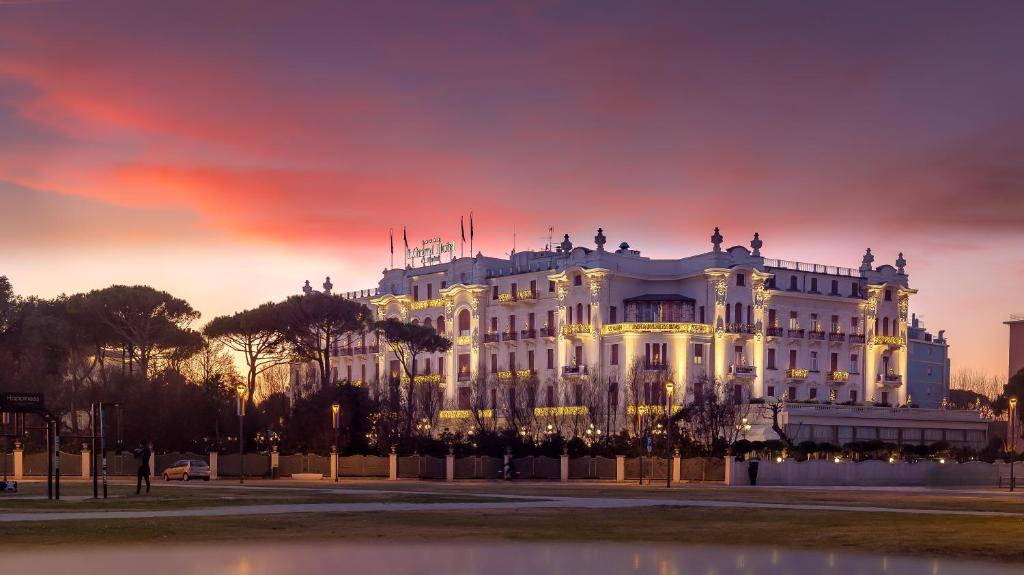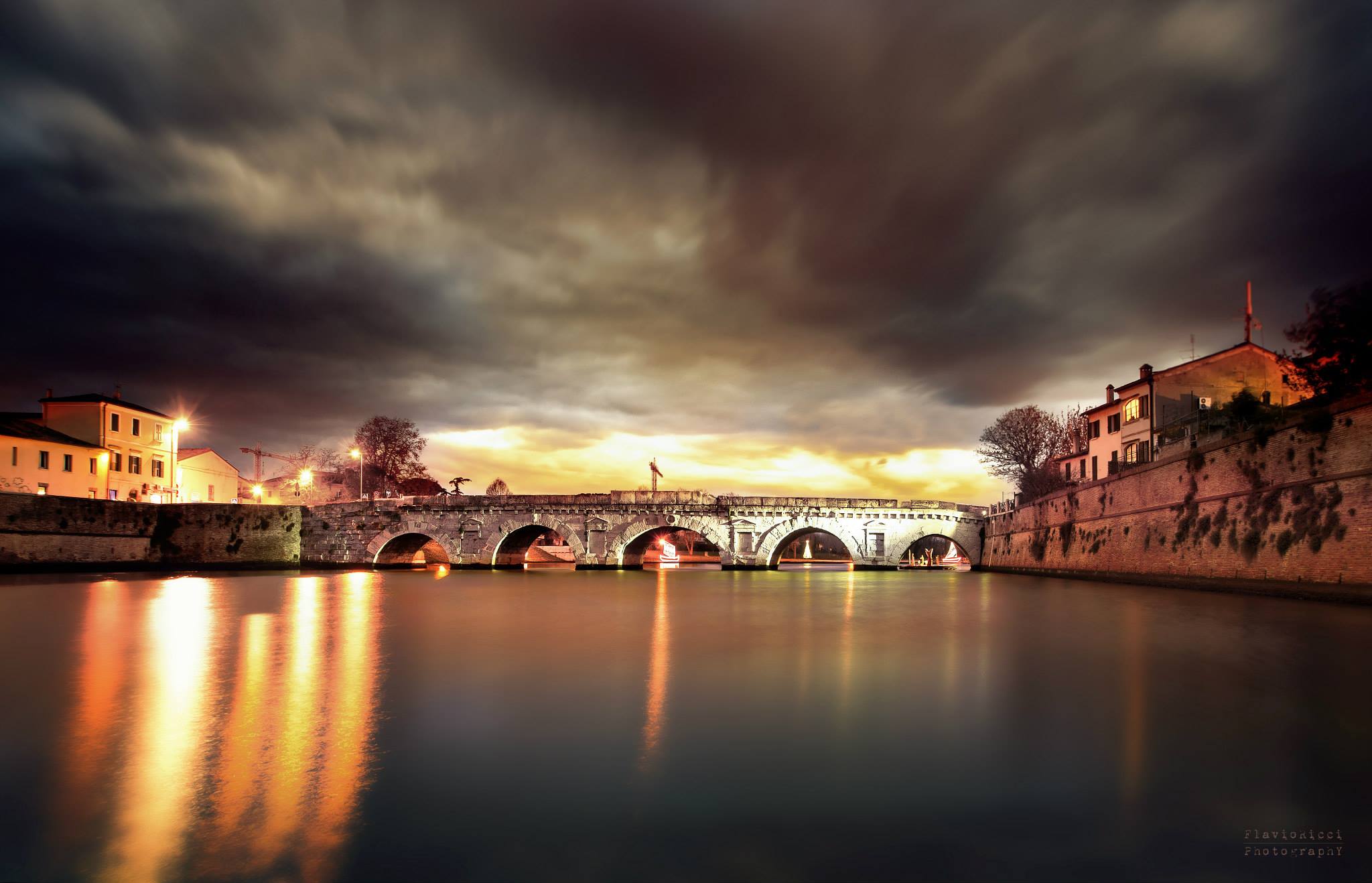
Have you ever noticed a face sticking out its tongue on the Arch of Augustus?
Don’t laugh, it’s a true story.
And it’s not the only secret this monument hides.
Tourists take pictures of the Arch of Augustus, admire it for a few minutes, and move on.
They don’t realize they’re missing out on a fascinating story that begins in 27 BC.
A story of gods who protected the city.
Of imperial statues that vanished without a trace.
Of gates that never closed (and the reason will leave you speechless).
In this article, I’ll reveal 5 secrets no tourist guide ever tells you.
It’s not your typical boring article full of dates and names.
It’s a journey back in time, when Rimini was a strategic crossroads of the Roman Empire, where the Via Flaminia met the Via Emilia.
THE GORGON PROTECTOR OF RIMINI
The stone guardian that will surprise you
Let me tell you a secret I often share with my guests when walking through Rimini’s historic center.
Look up at the Arch of Augustus.
Do you see it? There’s a strange figure sticking out its tongue.
That’s our Gorgon Medusa, and she has a fascinating story to tell.
She’s not just a decorative element.
The Romans carved her there in 27 BC, when they built the arch.
Her role was to protect the city’s main entrance.
That protruding tongue isn’t just artistic flair – it was a powerful symbol against negativity.
Picture the scene: It’s night, torches light the road.
The flickering flames bring the Gorgon’s face to life.
Passersby glance up, both frightened and reassured.
Elderly Rimini residents still tell incredible stories about this stone guardian.
They speak of wrongdoers turned to stone by her gaze and miraculous protections.
Today, our Gorgon still watches over Rimini.
Time has weathered her, but not her mysterious charm.
She’s one of the many hidden treasures of our city, far beyond beaches and nightlife.
Insider tip: visit the Arch of Augustus at sunset. The golden light creates shadow play that makes the Gorgon even more evocative.
THE MYSTERY OF THE MISSING QUADRIGA
The imperial statue that once dominated the city
Look up, toward the top of the Arch of Augustus.
See those medieval battlements?
They weren’t there in ancient Rome.
Instead, something far more impressive stood there: a bronze statue of Emperor Augustus on a chariot drawn by four horses.
How do we know?
The answer is in your pocket.
Or rather, in the pockets of ancient Romans.
In the 1800s, architect Maurizio Brighenti made a discovery that changed how we understood the arch.
On a denarius (a Roman coin) from Augustus’s era, he found the image of an arch identical to ours. And atop it stood an imperial quadriga.
This discovery led scholars to a new interpretation of the monument.
Examining the top of the arch, they noticed elements that could have supported such a structure.
Picture the scene:
The sun gleaming off the bronze statue
Travelers seeing it as they entered the city
The power it must have conveyed
What happened to that monumental statue?
It was likely melted down during barbarian invasions.
Bronze was too precious to be left unused.
Today, we can only imagine what it looked like.
But next time you pass under the arch, look up.
That missing statue still tells of Rome’s power and greatness.
The Door That Never Closed: When the Absence of Defenses Was a Symbol of Power
Did you notice something strange about this arch?
Take a close look: there are no hinges, no gaps for the door leaves.
There is no trace of doors.
“How is that possible?” is a question I often get from visitors at Aqua Hotel.
“Wasn’t a city without doors dangerous?”
The exact opposite.
This “flaw” was, in fact, a powerful message from Emperor Augustus.
Imagine Rimini in 27 BC: The civil wars are over.
Augustus has brought peace.
The empire is at its peak.
In this context, an always-open door said:
“We are so powerful that we don’t need defenses.“
The fornice – the large central arch you see – is impressive: 9 meters high.
It is the arched, empty space through which we still pass today.
It’s as if it were the entrance gate of a palace, but without the gate.
It’s as if today a bank left its vault open.
An audacious move?
No, a demonstration of strength.
This opening was exceptional for its time.
Other Roman urban gates were narrower and could be closed with heavy wooden doors.
But here in Rimini, a strategic point between Rome and the Po Valley, Augustus wanted something different:
A message of peace,
A symbol of power,
An always-open door to trade.
This situation lasted until the 3rd century AD, when the barbarian invasions forced the city to build a new gate closer to the river, this time with door leaves.
The Secret of the Via Flaminia: Where Rome Meets Rimini
Have you ever wondered why the Arch of Augustus is located right here?
It’s no coincidence. You are at the exact point where ancient Rome “met” Rimini.
Imagine you are a Roman merchant in the 1st century BC.
You’ve traveled 220 miles (about 330 km) from Rome.
You’ve crossed the Apennines.
And finally, before you, the Arch of Augustus rises.
You are on the Via Flaminia, one of the most important roads of the Roman Empire.
But it wasn’t just a road.
It was the highway of antiquity:
- It connected Rome to the Adriatic Sea.
- It allowed the passage of carts and legions.
- It transported goods and news.
- It united the heart of the empire to the north.
Right here, under the arch, the Via Flaminia ended its journey.
But it wasn’t an end.
From this point, the Via Emilia, another major road, started, connecting Rimini to Piacenza.
It is the same road that still runs through Emilia-Romagna today.
Want to see something special?
Take a couple of steps through the arch.
Look at the pavement beneath your feet.
Some of those stones are original Roman stones.
You are walking exactly where the Romans walked 2000 years ago.
And do you know what is the most surprising part?
The path of the Via Flaminia is still visible today.
The Corso d’Augusto, the main street in Rimini’s historic center, still follows the exact route of the ancient Roman road.
The Two Great Transformations: From the Middle Ages to Fascism
The arch you see today is not exactly the same as the one the Romans built. It has gone through transformations that radically changed its appearance.
The First Transformation: From Roman to Medieval
When the arch was built in 27 BC, it was flanked by two polygonal stone towers, part of the city’s first defensive wall (3rd century BC).
In the Middle Ages, the monument underwent significant changes:
- Ghibelline merlons were added at the top (which you can still see today).
- The ancient polygonal towers continued to be an integral part of the structure.
- The arch became part of the city’s defensive system.
The Second Transformation: The Fascist Era
In 1937, the Fascist regime decided to “liberate” the arch.
Before this intervention, the arch was perfectly integrated into the urban fabric of the city.
There are beautiful testimonies of this:
- 18th-century prints by Tommaso Temanza showing the arch integrated into the walls.
- 19th-century engravings by Rosaspina depicting a lively entrance to the city.
- Photographs documenting the neighborhood before the demolitions.
The fascist project involved:
- The demolition of all the surrounding houses.
- The destruction of the remains of the ancient polygonal towers.
- The complete isolation of the monument.
Today we see the arch isolated, but for almost 2000 years, it was the beating heart of a lively neighborhood where people lived, worked, and thrived.
A Stone Witness Waiting Just for You
I have revealed five secrets of the Arch of Augustus:
- The face of the Gorgon Medusa, which, from the outer side of the arch, drove evil away from the city.
- The majestic statue of Augustus on a chariot, whose existence is suggested by an ancient imperial coin.
- The archway without doors, a powerful symbol of Pax Augustea.
- The exact point where the Via Flaminia met Rimini.
- Finally, its journey through the centuries: from a Roman gateway to a medieval fortress, to the isolation desired by the Fascists.
But there is much more.
Every time I pass under this arch, I discover something new. A hidden detail. A forgotten story. A different corner of light.
It is not just a monument to photograph. It is a stone book waiting to be read.
Do you want to read it with me?
At the Aqua Hotel, just a few steps from the arch, I have created something special for my guests.
A different way to discover Roman Rimini.
See the offers at Aqua Hotel at this link:
👉 Book your stay now: link to special offers at Aqua Hotel.
I look forward to welcoming you.
Cristian





